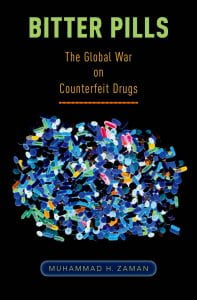Publications
NU TechRep #2105: SDP-SF Workshop Notes May 3-4, 2021
Authors: Mansoor Amiji, Walter Gabriel, Ioannis Kakadiaris, Nikos Passas, Ravi Sundaram & Muhammad Zaman
This is a compilation of the notes from the 2-day SDP_SF Workshop held, virtually, on Monday May 3 and Tue May 4, 2021.
The workshop brought together partners from diverse backgrounds with whom the Find-M (Financial Network Disruptions in Illicit and Counterfeit Medicines Trade) team have been collaborating since 2020 to document challenges and opportunities for sensing, disrupting, and preventing the trade in substandard/falsified medical products. The participants came from a variety of institutional and organizational backgrounds – pharmaceutical companies, medical device makers, regulatory and law enforcement agencies, international organizations, academies and universities – and represented a range of different disciplines – life sciences, legal, computer science, law enforcement, bio-engineering, cryptography, public health, etc.
The first day began with Dr Wendi Nilsen, National Science Foundation giving the keynote speech and the second day opened with Prof. Paul Newton, Oxford University as the keynote speaker. On each of the days the keynote speeches were followed by three panel discussions moderated by members of the FIND-M team. Each session started with 2-minute answers by each panelist to three questions, before being opened up for discussion. Each panel session lasted about 50 minutes.
On the network you keep: analyzing persons of interest using Cliqster
Combinatorial approach in the design of multifunctional polymeric nano-delivery systems for cancer therapy

Bitter Pills: The Global War on Counterfeit Drugs

Even when the U.S. system works, as it mostly does, consumers are increasingly circumventing the safeguards. Skyrocketing health care costs in the U.S. have forced more Americans to become “medical tourists” seeking drugs, life-saving treatments and transplants abroad, sometimes in countries with rampant counterfeit drug problems and no FDA. Bitter Pills will heighten the public’s awareness about counterfeit drugs, critically examine possible solutions, and help people protect themselves. Author Muhammad H. Zaman pays special attention to the science and engineering behind both counterfeit and legitimate drugs, and the role of a “technological fix” for the fake drug problem. Increasingly, fake drugs affect us all.
Network Effects of Risk Behavior Change Following Prophylactic Interventions
